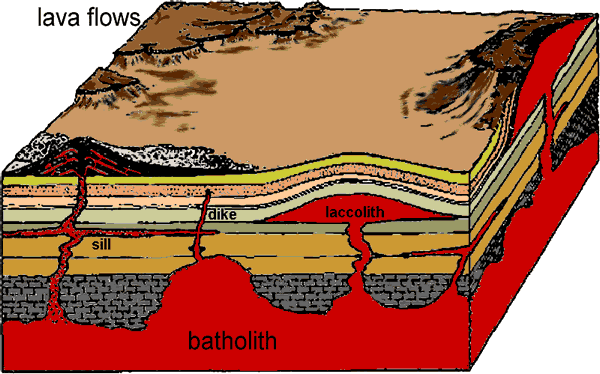|
Plutonic rocks can form in large or small magma
chambers inside the crust and upper mantle of the Earth. These
chambers never reach the surface, unless they have cooled and the
surface rocks are eroded away. The term pluton refers to large
and small chambers. A batholith is the largest chamber, while a
laccolith is a smaller pluton. Magma cuts into what is called the country
rock. It can intrude either in the same direction (a sill) or
across the beds (dike).
Sometimes the molten rock inside the chambers may
be chemically different. This would create different types of minerals
as the rock cools. For example, molten rock rich in silica (SiO2),
aluminum (Al), potassium (K), and calcium (Ca) tends to make
light-colored minerals. This would be similar to granite. In contrast,
gabbro is a rock from magma rich in iron (Fe) and magnesium (Mg), with green to black minerals.

|